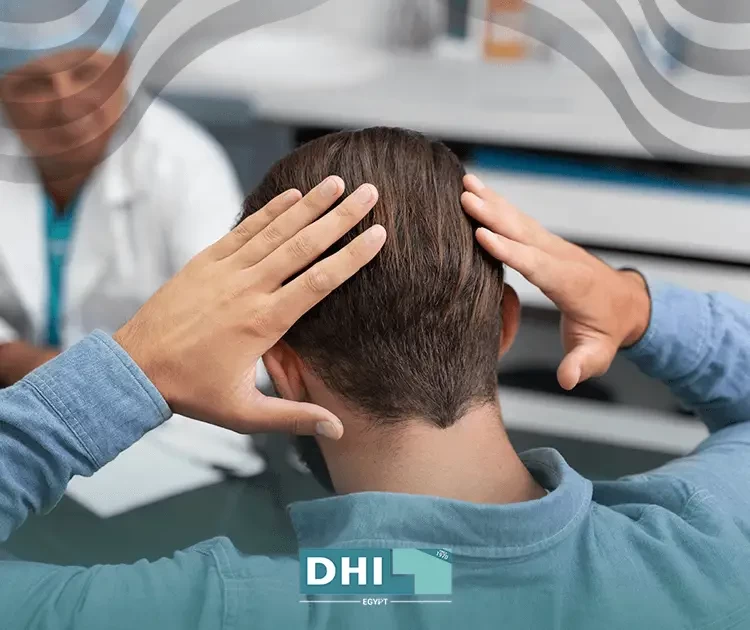Starting a hair transplant journey is both exciting and terrifying. Concerns about potential complications arise when the term "Folliculitis after Hair Transplant" is mentioned. Fear of post-surgery inflammation, redness, and pimples can make it difficult to take the necessary step toward hair restoration.
In this article, we address these concerns, providing insights to help you make an informed decision on your journey to a fuller head of hair.
What is folliculitis?
Folliculitis is an inflammation of a hair follicle that can appear on any part of the body. The appearance of the characteristic white pimple confirms its presence, which often occurs after shaving and may be accompanied by the formation of pus.
Various factors can cause folliculitis, including bacterial or fungal infections, irritation, or inflammation of the hair follicles.
Folliculitis After Hair Transplant: Is That Normal?
According to one study, folliculitis can occur after a hair transplant in 1% of cases. It could be caused by the stress placed on hair follicles in the donor and receiving areas.
Usually, two weeks after the transplant, when the new hair grafts are starting to grow, scalp pimples appear. Patients should not be concerned if they notice these scalp pimples for a long time because they can last up to six months.
Folliculitis After Hair Transplant: Causes
Folliculitis can occur after a hair transplant for a variety of reasons. If you notice red pimples in the transplanted area, the following explanations may help.
Incorrect graft placement
Poor placement of grafts or improper dissection of grafts can lead to the formation of large Scabs after transplantation.
Previous skin disorders
Other pre-existing skin disorders that can lead to foliculitis include acne, dermatitis, and eczema.
Poor aftercare and hygiene
Poor post-surgical hygiene, in most cases, causes post-surgical folliculitis. Bacteria enter open wounds after hair transplantation, causing folliculitis.
Ingrown Hairs
Hair transplants can occasionally grow inward instead of outward, resulting in inflammation and folliculitis.
Blocked Follicles
Following surgery, debris or oils may block hair follicles, providing the ideal conditions for the growth of folliculitis.
Excessive Sweating
After a hair transplant, sweat accumulation may raise the risk because wet conditions can encourage the growth of bacteria that cause folliculitis.
Folliculitis After Hair Transplant: Symptoms
Folliculitis and infection symptoms after a hair transplant include:
- A pus-filled abscess.
- oozing pus.
- Redness or discoloration.
- Swelling.
- Pain.
- Itchiness and burning.
- Bleeding and warmth.
Also Know:
Hair transplant results after 5 months
heavy lifting after hair transplant
Folliculitis After Hair Transplant: Treatment
If you experience any symptoms of folliculitis after a hair transplant, you should contact your surgeon right away. In such cases, your surgeon may advise you to take antibiotics and use specialized shampoo to treat the condition.
Seeking immediate advice is essential to effectively managing folliculitis symptoms and guaranteeing a quicker recovery following the hair transplant procedure.
DHI clinic recommendations to avoid follicullitis after hair transplant
To ensure a healthy recovery period, follow the instructions below:
- Select a hair transplant surgeon who is skilled and experienced.
- Attend your scheduled follow-up appointments.
- Avoid alcohol and tobacco while recovering.
- Avoid picking at your scabs or touching your wounds.
- Stay out of the sun, preferably in cooler and dust-free areas.
- Take the medications prescribed to you as soon as possible after surgery.
- Avoid strenuous exercise until your surgeon says it is safe.
If you have any concerns or questions about folliculitis after hair transplant, contact DHI Clinics in Egypt for expert guidance and personalized information. Our experienced team is here to provide the support and assistance you need for a successful and worry-free hair restoration journey. Don't hesitate to reach out for valuable insights and peace of mind.
FAQS
How long does folliculitis last after a hair transplant?
The duration varies, but folliculitis can last for a few weeks to several months. Early detection and appropriate treatment can help manage and shorten the duration of folliculitis.
Can folliculitis lead to complications in the healing process?
Yes, untreated folliculitis can potentially lead to complications in the healing process.

